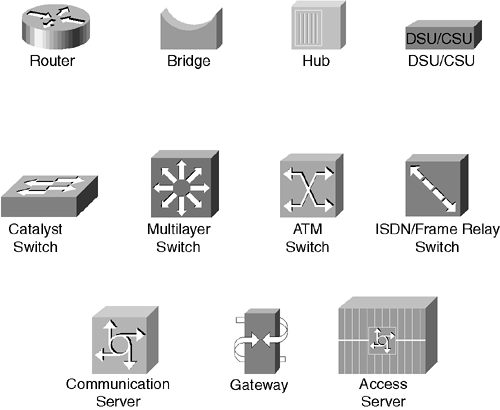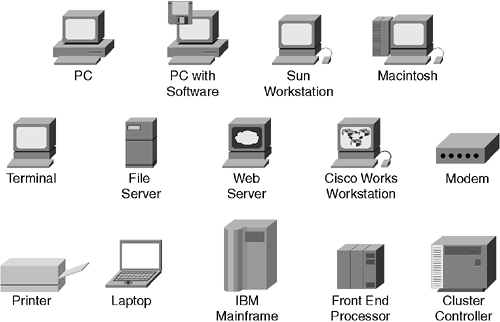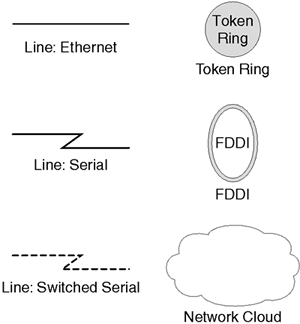Introduction
CCNP Practical Studies: Troubleshooting is part of the Practical Studies series of Cisco Press books designed to prepare readers for the CCNP exams and real-world application of LAN and WAN technologies. Unfortunately, life is not just a checklist and neither is supporting networks. However, if you know how things are supposed to work, use a consistent troubleshooting method and layered approach, apply your skills through hands-on application, and have a positive attitude, you are most certainly on your way to shooting trouble before it shoots you.
Troubleshooting skills are a must-have for every CCNA, CCNP, and CCIE today. There is an increasing demand for practical application of the knowledge learned in Cisco and other internetworking classes. People learn by doing. Practice makes perfect. Employers want people with degrees and certifications, but they really need people who can perform the job that their resume says they can. This book gives you a practical advantage over the competition through real-world application of internetworking topics. It is designed for CCNAs and CCNPs as well as the want-to-be seeking practical experience in the topics covered on the CCNP Troubleshooting exam. Because material in this book is very helpful for anyone in or pursuing a support career, even CCIEs and other support professionals may enjoy reviewing the book to sharpen their troubleshooting skills. The scope is limited to TCP/IP and routing and switching and to a lesser extent Novell IPX troubleshooting.
Cisco Career Certifications
Cisco CCNA, CCNP, and CCIE certifications coupled with field experience ensure high standards of technical expertise and can lead to outstanding opportunities. To learn more about the Associate, Professional, and Expert certification paths, go to www.cisco.com/en/US/learning/index.html.
Beyond being an excellent troubleshooting training tool, this book helps prepare you for the Cisco Internetwork Troubleshooting (CIT) Troubleshooting exam, which is one of the exams required to achieve CCNP certification. Review the published support exam topics at www.cisco.com/en/US/learning/index.html (click Professional, then CCNP, and then Troubleshooting exam).
To schedule an exam in the United States and Canada, visit Prometric online at www.prometric.com or VUE at www.vue.com. Alternatively, call 1-800-829-6387 (NETS) to register for an exam.
Goals of This Book
Cisco Systems, Cisco Press, and I strongly recommend that you supplement instructor-led training with additional practical experience to prepare for Cisco certification exams and gain the knowledge necessary to work in the field. Cisco is starting to make sure of that by including simulations on their certification tests.
This book assumes a CCNA level of knowledge. Many times when students get to the CCNP curriculum, however, they fail to understand the basics of TCP/IP networking and lack a methodology to troubleshoot basic issues. This will not be an issue for readers of this troubleshooting guide because supporting TCP/IP and Cisco internetworks are essential goals of this book.
This book is a strong companion to the Cisco Internetwork Troubleshooting course as well as other Cisco Press and third-party materials, including the Cisco System website, www.cisco.com. It is an essential resource to prepare you for the real-world CCNP Troubleshooting certification. It helps you test yourself before your employers do.
To meet these goals, this book helps you do the following:
Establish a baseline and document your physical and logical internetwork.
Take step-by-step approaches to troubleshooting.
Understand protocol characteristics and tools to help identify how technologies work so that you know when they are broken.
Experience coverage of IP over Ethernet and the WAN.
Apply your troubleshooting skills firsthand through practical chapter scenarios, detailed figures, and examples.
Set up a test lab or at least walk through the solutions to solve real-world situations via Trouble Tickets. People learn by doing. Hands-on labs assist you in quickly recognizing common issues so that you avoid just applying the swap-till-you-drop approach to troubleshooting.
In addition, this book provides supporting resources and files including troubleshooting checklists and charts, tools, Sniffer Pro protocol analyzer captures, downloadable configurations, review questions, and the appendix materials.
How to Use This Book
To get the maximum benefit from this book, when reading engage yourself in the chapter scenarios and practical approaches to supporting the LAN and WAN. It is critical to learn to identify trouble spots using a layered approach—however, this cannot be accomplished via memorization techniques. This book shows you how to apply theoretical knowledge and skills to practical scenarios. Each chapter includes a scenario that forms the practical hands-on basis for a review of the applicable technology. Each chapter ends with real-world Trouble Tickets designed to give you further practical experience. Having your own equipment or access to equipment is the ideal way to profit from this book (see Appendix C), but if that is not possible, the appropriate information is delivered through figures, configuration examples, and text, so you can still follow along with the practical exercises.
Troubleshooting commands such as cdp, ping, trace, set, show, clear, and debug are used extensively in the printed examples in this book so that you can follow along with or without the appropriate equipment. Captures from Sniffer Pro protocol analyzer traces and other tools emphasize important concepts and trouble spots as required. Each chapter suggests additional references such as utilities, labs, websites, and supplemental reading as it relates. Refer to Appendix C if you need to get started right away on acquiring the equipment for your lab.
I sincerely wish you the best with applying this book to your specific requirements. I recommend that you use the first couple of chapters to review the topics you think you already know. Use Chapter 10 as both a pre-test and a post-test for the book. It includes a comprehensive set of self-guided Trouble Tickets that enable you to assess your support skills before and after reading the book. If you want, turn to it now to get familiar with what to expect throughout the book. Then you can return to the beginning of the book and spend as much or as little time needed on the topics included.
My experiences and studies have given me the challenges and opportunities needed to live and work in our technologically advancing society. Providing technical expertise, leadership, and support to my employer, coworkers, family, and friends gives me the challenge, encouragement, and enthusiasm required to utilize today's technology for tomorrow's competitive advantage. Please help me continue that by sending your feedback to [email protected].
Supporting Files
You can find files and links to utilities that support this book on the Cisco Press website at www.ciscopress.com/1587200570. Even if you do not have a lab, you can take advantage of the supporting configuration files including the logs to understand device input and output. The files are listed throughout the chapters in italics.
In order to be able to read and work with some of the supporting files offered at www.ciscopress.com/1587200570, you may want to download some of the programs listed in Table I-1.
| Software | Website link | Evaluation copy available? | Description |
|---|---|---|---|
| Protocol Analyzers | |||
| Network Associates Sniffer Pro | www.sniffer.com | No | Protocol analyzer used throughout this book. |
| Ethereal | www.ethereal.com | Free | Protocol analyzer. |
| WildPackets EtherPeek | www.wildpackets.com | Yes | Protocol analyzer. |
| Terminal Emulation Programs | |||
| SecureCRT | www.vandyke.com | Yes | Terminal emulator used throughout this book. Supports Telnet/SSH. |
| HyperTerminal | www.hilgraeve.com | Comes with Windows operating systems. | Update your Windows terminal emulator to the private edition for free. |
| PuTTY | www.chiark.greenend.org.uk/~sgtatham/putty/download.html | Free | Telnet/SSH
SCP SFTP |
| FTP/TFTP/Syslog Programs | |||
| PumpKin TFTP | www.klever.net/kin | Yess | TFTP client and server. |
| 3CDaemon | support.3com.com/infodeli/swlib/utilities_for_windows_32_bit.htm | Free | TFTP
FTP Syslog |
| Cisco TFTP server | www.cisco.com/pcgi-bin/tablebuild.pl/tftp | Free | TFTP server. |
Command Syntax Conventions
Command syntax in this book conforms to the following conventions:
Commands, keywords, and actual values for arguments are bold.
Arguments (which need to be supplied with an actual value) are italic.
Optional keywords and arguments are in brackets [].
A choice of mandatory keywords and arguments is in braces {}.
Note that these conventions are for syntax only.
Icons Used in This Book
Throughout this book, you will see the following icons used for networking devices:

The following icons are used for peripherals and other devices:

The following icons are used for networks and network connections:

